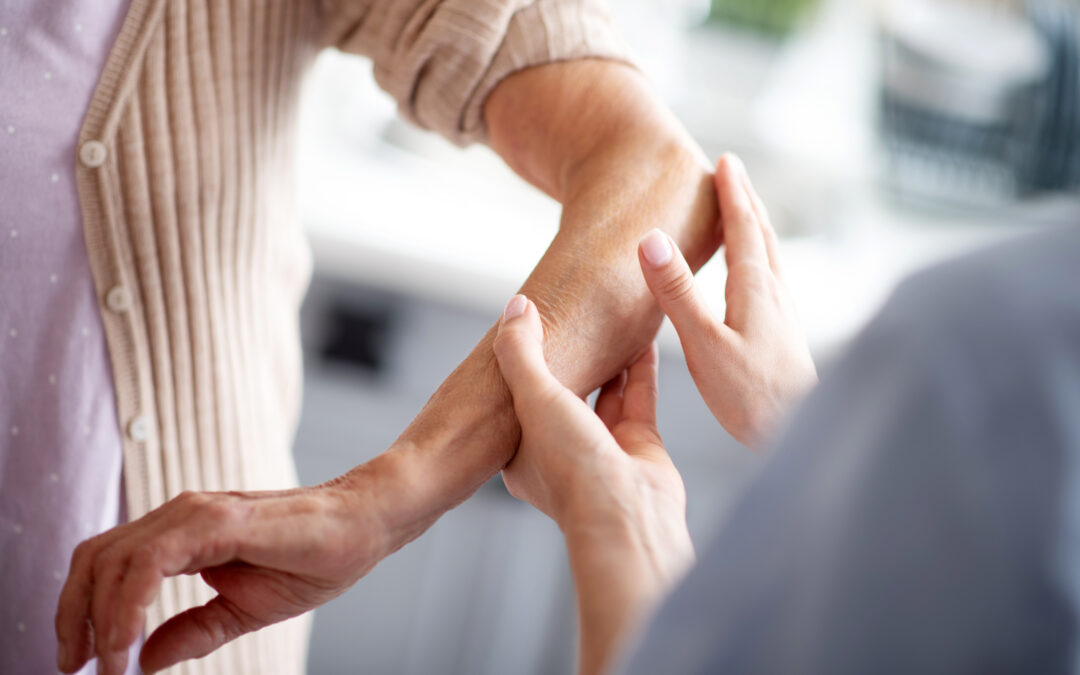Contents
The elbow may seem like a simple hinge joint, but it’s a complex and crucial part of your body. It allows you to bend, straighten, twist and lift. These are all vital movements to everyday activities. The elbow joint is where the humerus, ulna and radius meet. These bones are held together by strong ligaments and cushioned by smooth cartilage. Muscles and tendons surround the joint. Working together, these help your elbow have controlled and friction-free movement that you need to bend and straighten your arm. If you’re experiencing pain when you extend your elbow, you’re not alone. This pain can be caused by a variety of factors, but there are often effective treatments available to help you find relief.
Potential culprits behind your elbow pain
Several reasons could explain the pain you’re experiencing when you extend your elbow. Common culprits include:
- Tendinitis — The tendons are fibrous tissue that connects muscles to bones. When these tendons become inflamed, it’s known as tendinitis. It can be caused by overuse from repetitive motions. These motions can be seen in golf, tennis and some household chores. The pain can be felt on the outside or inside of the elbow and may get worse during activity.
- Bursitis — The bursae are small fluid-filled sacs that help cushion between bones, tendons and the skin. When a bursa becomes inflamed due to overuse or injury, it can cause pain, swelling and tenderness around the elbow joint.
- Osteoarthritis — Wear and tear over time can cause arthritis. This can cause inflammation, stiffness and pain in the elbow joint. Arthritis pain can be worse in the mornings or after periods of inactivity. You may also experience a grinding sensation when you move your elbow.
- Ulnar nerve entrapment — The ulnar nerve runs along the inner side of your elbow. When it becomes compressed or pinched, it can cause a condition called cubital tunnel syndrome. Cubital tunnel syndrome can cause pain, numbness, tingling and weakness in the pinky and ring fingers. You may also experience a “funny bone” feeling when hitting the area around your elbow.
- Fractures — In severe cases, a fall or direct blow to the elbow can cause a fracture in one of the bones. This fracture can cause intense pain, swelling, bruising and significant difficulty moving your arm.
If you’re experiencing persistent elbow pain, especially if it also has swelling and bruising and you’re having a difficult time moving your arm, it’s essential that you consult a doctor or physical therapist for a proper diagnosis and treatment plan.
Treatments for elbow pain when extending your arm
Experiencing pain when you extend your elbow can be frustrating and disrupt your daily activities. There are several ways to help you treat your pain, including:
- Rest and activity modification.
- Physical therapy.
- Medication.
- Bracing or splinting.
- Corticosteroid injections.
- Surgery, in severe cases.
Physical therapy methods for elbow pain when extending your arm
Physical therapy can be an effective tool to help promote healing, regain mobility and prevent future problems. Your physical therapist will assess your situation through a comprehensive evaluation. This evaluation will include a physical examination, and you may need to see your doctor for imaging tests like X-rays or ultrasounds. Based on their findings, your physical therapist will create a custom treatment plan designed around your unique needs and recovery goals. If your physical therapist has their Certification in Orthopedic Manual Physical Therapy (COMT), you can take advantage of further benefits of more advanced manual therapy techniques to help you in your recovery. Some common physical therapy techniques your physical therapist may use include:
- Manual therapy — Manual therapy encompasses a wide variety of hands-on techniques used by physical therapists. A COMT has advanced skills in these techniques. Manual therapy techniques can include joint mobilization, soft tissue manipulation and trigger point therapy. For joint mobilization, your physical therapist will use gentle, controlled movements applied to your elbow joint. These movements can help improve its range of motion and flexibility. Joint mobilization can be helpful in cases of stiffness or limited movement that can be associated with arthritis or bursitis. Soft tissue manipulation involves your physical therapist using sustained pressure or slow strokes to help release tension in tight muscles and relieve pain around the joint. This can help improve circulation, promote healing and reduce inflammation. Trigger point therapy focuses on targeting trigger points. Trigger points are hypersensitive areas within muscles that can cause pain and limit movement. By deactivating these trigger points, it can reduce pain and improve flexibility to lead to better overall function.
- Therapeutic exercises — Your physical therapist may create a therapeutic exercise routine that is made up of exercises that help strengthen and stretch your muscles. Strengthening exercises in the elbow help support and stabilize your elbow joint and may include isometric holds, light weights or resistance bands. Regular stretching exercises are essential to help maintain flexibility and prevent future stiffness. Specific stretches target muscles around your elbow joint, improve your range of motion and make it easier for you to extend your arm fully. Therapeutic exercises can help with tendinitis, bursitis and arthritis.
Lattimore PT can help you take control back from elbow pain
At Lattimore Physical Therapy, our team of experienced physical therapists is dedicated to helping you achieve your optimal recovery from elbow pain. We understand the unique challenges elbow pain can bring to your life. Our therapists, which include over 30 COMTs at our clinics, will work closely with you to create a treatment plan customized to fit your specific needs and goals. With our guidance and your commitment, we can help you overcome elbow pain and get back to doing activities you love.
Contact our team today for more information or to schedule an initial appointment.

